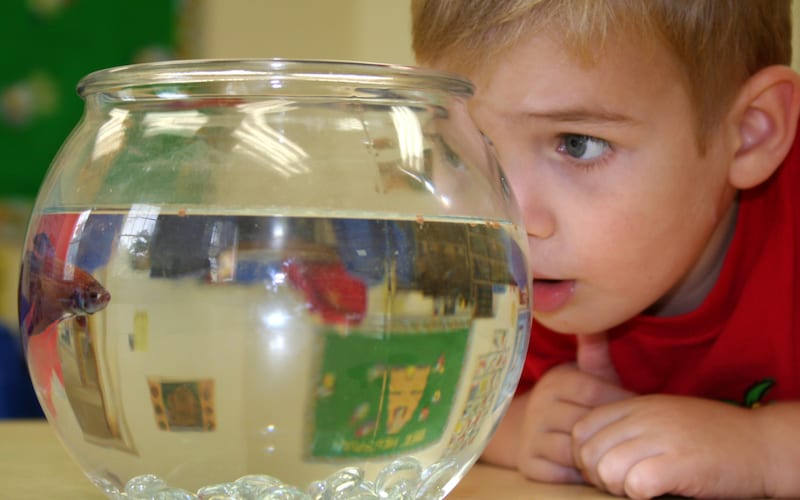I’ll never forget the morning I opened my classroom only to discover that our class crawfish had gone belly up. I adopted Little Buddy during a summer science course for teachers at the local university. That fall, he became a beloved part of my third- and fourth-grade classroom. My students watched in fascination when he molted, delighted in gifting him peas from their lunches, and longed to be chosen to take him home over long weekends.
It’s not an easy thing to tell a class full of 8- to 10-year-olds that their class pet has died, but with love, common sense, and one frantic phone call to my mom, I managed just fine. Here’s my advice for how to handle the death of a class pet:
Tell the truth.
Many of us may have childhood experiences where an adult told us that a pet went to live on a farm or ran away. I don’t think we’re doing kids any favors by sparing them from the truth. These kinds of explanations only serve to confuse. Let’s consider that, for many kids, this is their first experience with death. Our honesty in this situation allows them to learn an important life lesson in the comfort of a familiar classroom environment. We are, in fact, preparing them for more significant losses in the future.
(If you’re old enough to remember when Mr. Hooper died on Sesame Street, you know exactly what I mean.)
Use simple, straightforward language.
This is a pretty solid strategy no matter what you’re explaining, especially when dealing with young learners (from “What does ‘gay’ mean? to “What happened to Fluffers?”). When you break the news to your students, go ahead and use the language of “died.” Make sure your students know that what happened is a normal part of life. You can explain that “everything that lives dies” without going into any graphic detail that might be upsetting.
[contextly_auto_sidebar]
Allow time for grief and reflection.
When Buddy died, we spent the day being pretty sad. But we did it together. A class meeting is a nice way to for students to process their feelings and remember the good times with their class pet in a community setting. They may also need some individual time. Writing is a good outlet, as is art. Provide some time for choice activities that facilitate students working through their grief, from journaling their memories to drawing a portrait.
Read a book.
Pretty much any time we had an issue in my classroom, I went straight to read aloud as my first line of defense. Bullying? The Invisible Boy. Gender stereotypes? Amazing Grace. In the case of the loss of a class pet, teachers of younger students can reach for Todd Parr’s The Goodbye Book or Judith Viorst’s The Tenth Good Thing About Barney. For older kids, try Cynthia Rylant’s Missing May or Kira-Kira by Cynthia Kadohata.
How have you handled the death of a class pet? Come share in our WeAreTeachers HELPLINE group on Facebook.

